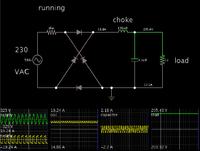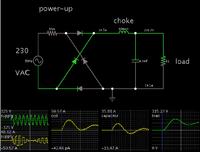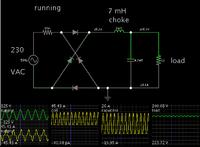Rik797
Junior Member level 3

- Joined
- Oct 25, 2012
- Messages
- 28
- Helped
- 4
- Reputation
- 8
- Reaction score
- 4
- Trophy points
- 1,283
- Location
- Bologna, Italy
- Activity points
- 1,473
Hi guys!
As last part of my switching mode power supply, I need to design the DC bus (or DC link). The equivalent load is 12 ohms (4200 W @ 230 Vac).
By connecting the rectified mains (230 Vac, 50 Hz) to a 4700-uF electrolytic capacitor, I obtain ripple current peaks of 200 A during the capacitor charge (100-Hz frequency).
Ripple current ratings of electrolytic capacitors, however, are usually lower by one order of magnitude (e.g. 20 A)!
What would you suggest me? I am doing something wrong?
Thank you in advance!
Rik
As last part of my switching mode power supply, I need to design the DC bus (or DC link). The equivalent load is 12 ohms (4200 W @ 230 Vac).
By connecting the rectified mains (230 Vac, 50 Hz) to a 4700-uF electrolytic capacitor, I obtain ripple current peaks of 200 A during the capacitor charge (100-Hz frequency).
Ripple current ratings of electrolytic capacitors, however, are usually lower by one order of magnitude (e.g. 20 A)!
What would you suggest me? I am doing something wrong?
Thank you in advance!
Rik








